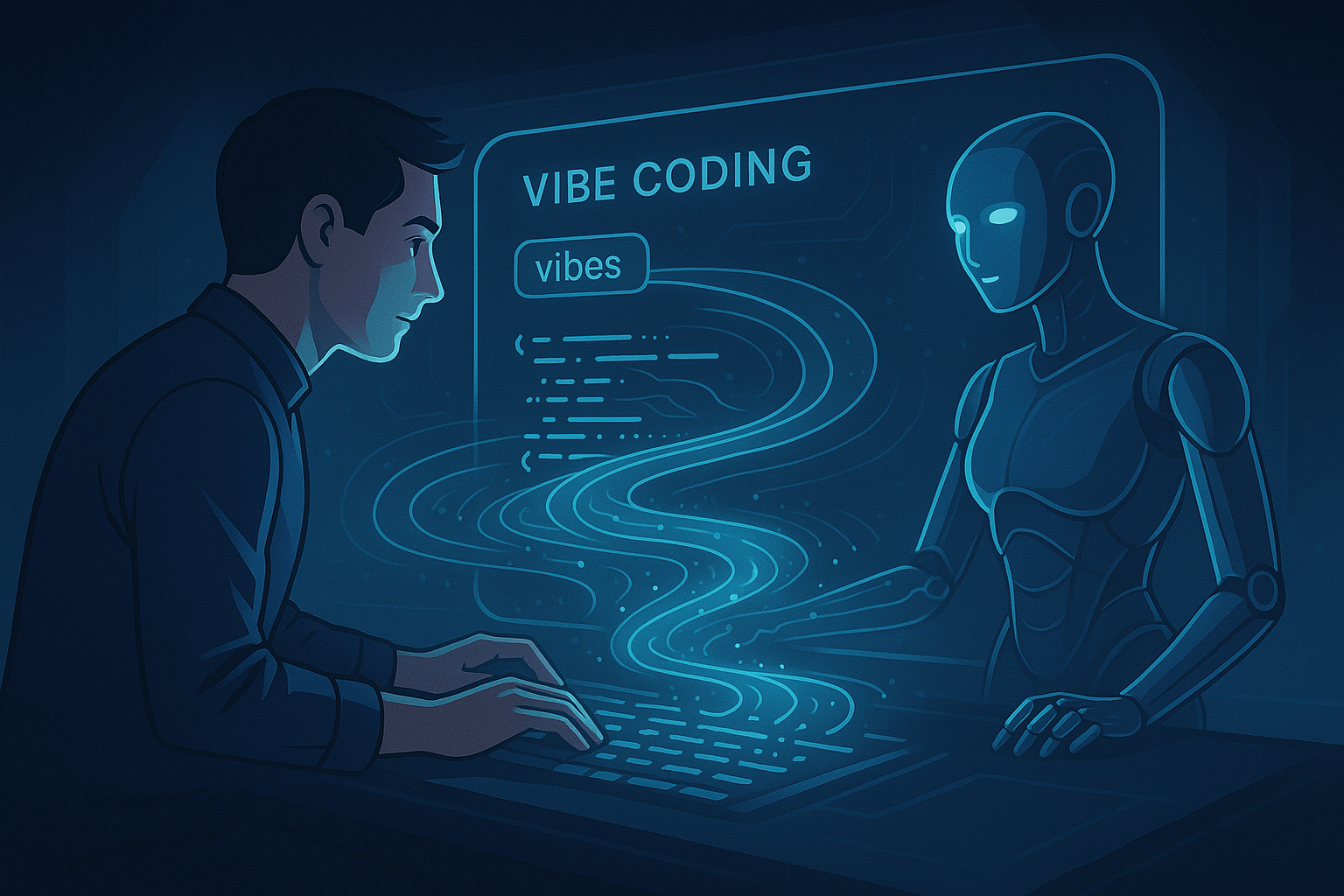The Future of Software Development with AI
Software development is changing quickly. This change is driven by progress in LLMs. Tools like GitHub Copilot and Cursor are becoming more common. They are changing from simple helpers into partners in coding. One new method is called vibe coding. This approach uses an LLM to create code from plain language descriptions or general ideas. The developer's job changes. Instead of writing all the code by hand, they guide the AI, test the results, and improve the code the AI generates. As professionals who focus on building strong, high-quality software, we need to see where this method fits best and what its limits are.
What is vibe coding?
Basically, vibe coding is a back-and-forth process. A developer gives an LLM tool fairly broad or general instructions. The aim is to get the LLM to create pieces of code, functions, or even basic structures for applications. The developer provides the general feeling or desired result, like "I need a function to get user data from an API and show it in a simple table". They do not provide detailed steps or exact plans. The LLM tries to figure out the intention and write code that matches. The developer then looks at the code, changes the instructions, or asks for fixes. It is like a conversation between the person and the machine. Its success depends strongly on how well the model understands the instructions.
Quick Starts and Temporary Prototypes
Vibe coding is particularly useful at the beginning of projects. It is ideal for quickly exploring ideas and creating preliminary prototypes.
Making PoCs faster: If you need to turn an idea into something real quickly to show it works or get feedback, vibe coding can help. It can create working examples much faster than writing code manually. This lets teams see concepts quickly. It makes early talks and agreements easier before spending a lot of engineering time.
Checking if ideas can work quickly: Sometimes you are not sure if a technical idea can work or if using a certain library will solve a basic problem. Vibe coding offers a fast and cheap way to test these ideas first. This helps lower the risk of spending effort on plans built on wrong ideas.
It is very important to remember that code created this way should usually be seen as temporary. It is good for learning, testing ideas, and getting new thoughts. But it is not a replacement for the careful planning and thorough building needed for real, production software. You can think of it like a quick sketch, not the final building plan.
The art of precise steering of LLMs
Tools like Cursor or Replit offer advanced features. They might even use AI agents to write code on their own. But how well they work still depends a lot on the quality of the prompts given by the developer. Also, the LLMs themselves are always changing. A quote from the blog article describes it well "This is working well NOW, it will probably not work in 2 weeks, or it will work twice as well". This lack of certainty and the chance for changes in how models work make it unwise to trust the generated code completely. This is especially true for important business systems or core software parts.
When simple ideas don't work
Vibe coding can create code that looks like it works for simple tasks or small applications. But it does not really understand what is needed to build complex software that can grow and last. Building such software requires professional skill.
Lack of big picture view: LLMs usually work without seeing the whole picture of the software plan. Code created alone might not fit well with other parts. It might break common rules or create unexpected problems down the road. This leads to big problems later and makes the software hard to fix.
Missing important qualities: Key things like handling many users, being easy to fix over time, dealing well with errors, and being easy to test completely are usually not things the LLM thinks about. These need careful planning by software engineers.
Uneven code quality: The quality of code from LLMs can be very different from one time to the next. This can weaken team rules for coding and make the code less consistent. Consistency is needed when teams work together for a long time.
The big security danger
Maybe the biggest danger is security. LLMs are made to create code that works. They are not made to create code that is safe. The safety level of the generated code completely depends on how much the developer thinks about safety when writing prompts. Unclear or simple instructions can easily lead to code full of common security holes, like Injection attacks or Cross-Site Scripting. PoCs or prototypes made with vibe coding should never be used for real users without very careful security checks. They will probably need major changes made by experienced, security-focused engineers.
Vibe coding does not replace a developer
Vibe coding is an interesting new part of the developer's toolkit. It is especially useful for quick, early work and creating temporary examples that will be thrown away later. It can speed up checking if ideas work and maybe do some simple, repeated tasks.
However, the idea that it can replace skilled, experienced software engineers is completely wrong. Making strong, safe, software that can grow and is easy to manage is still skilled work. It needs careful thought, a clear plan for the structure, careful building, and thorough quality checks. These are skills that AI does not have right now.
The skilled developer's job changes. It involves using tools like LLMs smartly for certain tasks. But developers keep the important jobs. These include planning the structure, carefully checking code, making sure quality is high, and making sure the software is safe and works for a long time. People are still responsible for making great software.
